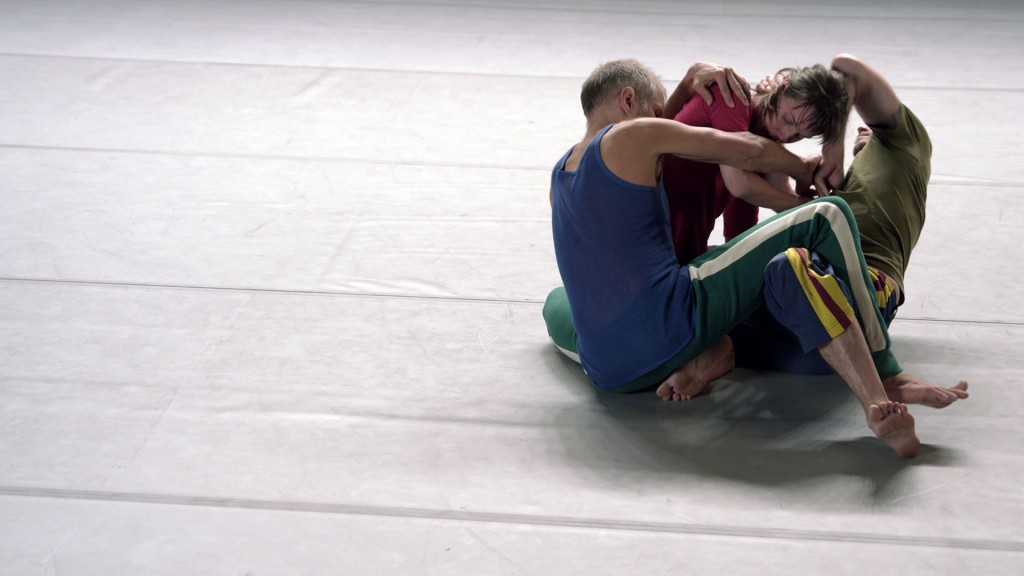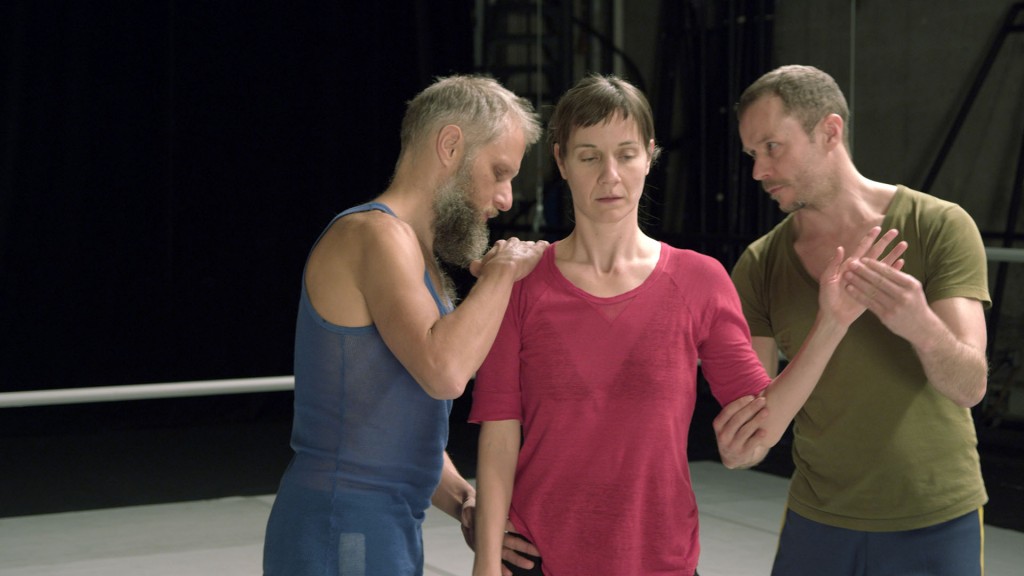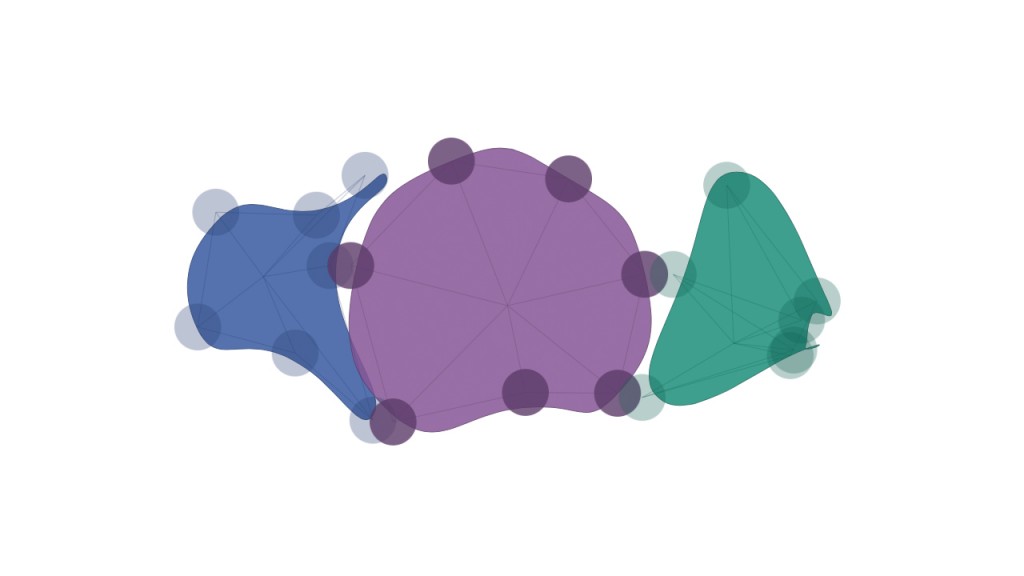For the past several months of this project, we have been focused on understanding and deconstructing Thomas Hauert’s choreographic tool, the Careful Scientist. The Careful Scientist is an exercise used by Hauert and his company to develop improvisation skills and encourage reflection on human anatomy and consciousness. The exercise involves a very specific set of four actions on joints in the arms. Working within a set of constraints, the dancer generates sequences of these four actions – an activity which helps to retrain tendencies and develop new possibilities for performance.
As seen in the video above, Hauert establishes the following four actions:
- Changing the direction the upper arm points in space
- Keeping the direction of the upper arm and rotating it around the shoulder axis
- Extending or flexing the elbow
- Rotating the forearm
The constraints of this exercise are then to simultaneously execute these actions in the left and right arm, to avoid symmetry of actions in the two arms, and to work towards overlapping motion – adding changes in duration and amplitudes to stagger the start and end time of actions on the two sides.
The exercise can be performed at increasing levels of complexity. Hauert often begins by demonstrating the exercise without the element of overlapping timing – by stopping and starting actions on the left and right sides simultaneously. More complexity can be added to the task by including the legs, knees, and hips while lying in a horizontal position. From performing this exercise, one becomes aware of the bimanual nature of movement programmed into the human body and through practice is able to overcome these tendencies.
The first level of our analysis was to use the motion capture data of Thomas performing the Careful Scientist and apply it to more mechanical, robotic digital models. Observing the Careful Scientist from an outsider’s perspective – this activity seems very robotic, calculated, and unnatural. The robot model was designed so that each of the joints was indicative of the nature of movement it can accommodate and to remove some of that complexity and ambiguity of the human body. This visualization made certain attributes of the actions evident, such as axes and limits of rotation which facilitated a clearer articulation of the rules of the exercise for us as researchers.
An algorithm was then written by graduate research assistant J. Eisenmann to generate the same kind of Careful Scientist data. This data, rotation orientations over time, was similar to that which we had gathered with motion capture. In this step we define parameters of movement based on Thomas’s rules, through code. Processing was used to create the program with the constraints and limited actions of the Careful Scientist exercise and to generate ‘performance data’ comparable to that of a live dancer. This algorithmic data was then applied to the robotic arm models and juxtaposed in this video.
Comparison and contrast of the two highlighted the unavoidable ‘human-ness’ of the motion capture data compared to that which was computer generated. ‘Human-ness’ is used here in a very loose sense to include a several observations:
- There is a difference in isolation of movement: The human data looks ‘noisy’ as it includes some natural secondary motion and sway that comes with the human body. The computer is able to isolate one single point of rotation at a time and thus appears more static
- Overshoot and Recoil: In a world without momentum or gravity, the algorithmic robot arms can stop a motion immediately whereas with the human data there are the elements of overshoot and recoil when a joint stops moving in one direction and another action begins
- Fluidity of Motion: The previous observations discussed also lead into the idea of fluidity in the appearance of the motion. The human arms ease in and out of actions which feel much more connected while the algorithm’s movement is more staccato in a sense
- Data analysis of the human performance reveals ‘errors’: There are moments where dancers violate the constraints of the exercise (performing the same action on both arms, using an action twice in a row, etc.) These types of mistakes are not made by a computer program
- Tendencies within the constraints: Human data show preference for certain actions or action sequences; also Hauert typically rotates a joint such as the elbow the full extent of rotation rather than stopping somewhere in the middle. The algorithmic version appears to have more ‘randomness’ of motion
In reflection, this visualization was a helpful tool in defining the Careful Scientist for ourselves and identifying the inner-body conflicts Hauert seeks to overcome. It could be helpful in explaining the Careful Scientist exercise for new audiences to show the rules on a simplified form such as the robot model rather than a human arm. This tool would not necessarily be conducive for communicating Hauert’s larger themes in his work and goals for movement generation to a broader audience, however.
–Malory Spicer, Graduate Research Assistant, ACCAD


